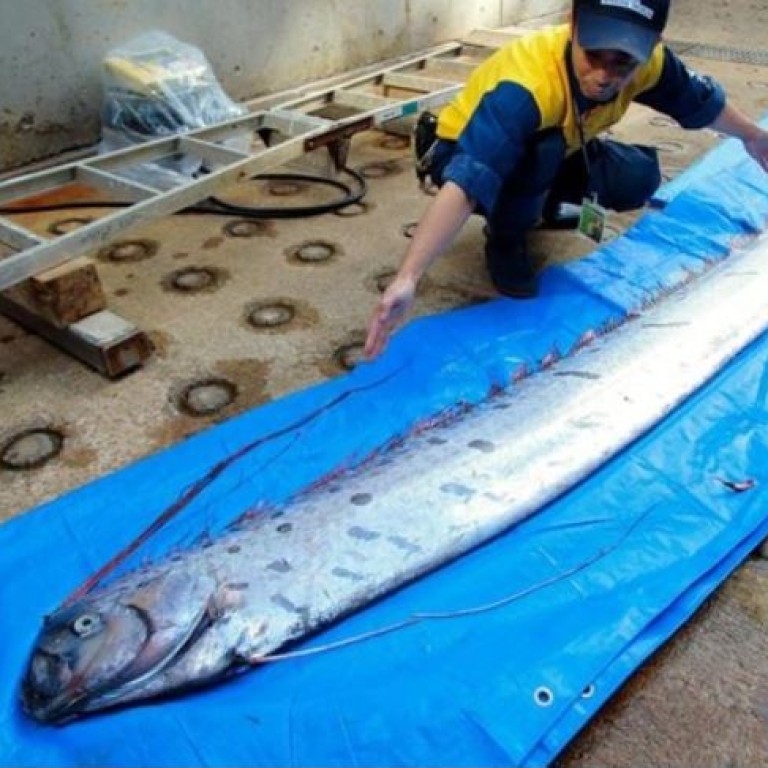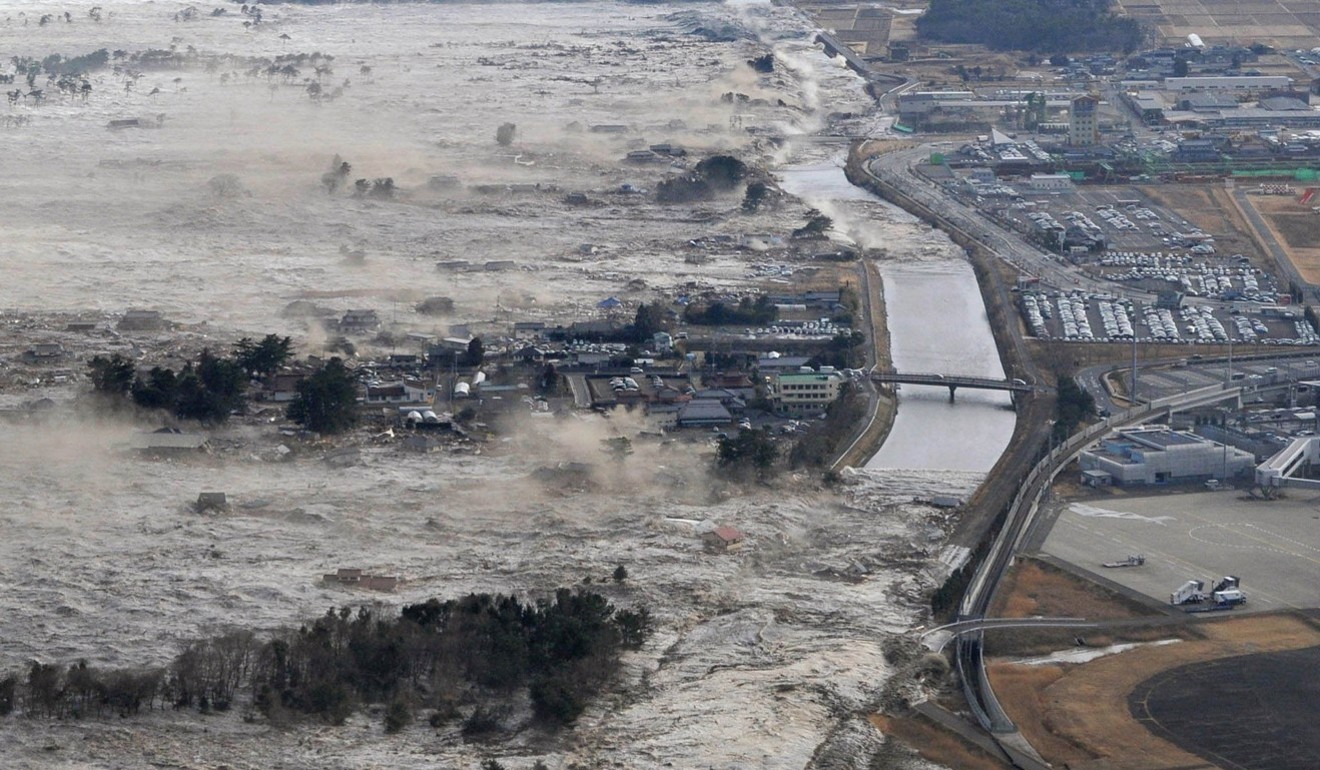
Japanese belief in link between deep-sea fish sightings and quakes finally debunked
- There is a long-held belief in Japan that when deep-sea fish rise to the surface a disaster is near
- Researchers compared earthquake records and fish sightings and concluded there is no link
A long-held belief in Japan that sightings of deep-sea fish foretell major earthquakes is simply a superstition, according to a research team from two universities.
The researchers from Tokai University and the University of Shizuoka reached the conclusion after comparing earthquake records with cases in which deep-sea fish were found beached or caught in fishing nets over around 90 years.
The belief that deep-sea fish sightings are connected with earthquakes has its roots in a mermaid legend found in the “Shokoku Rijin Dan”, a collection of strange tales published in the 18th century.
According to lore, the fish rise to the surface and beach themselves ahead of an impending earthquake.

There are also scientific theories that bottom-dwelling fish may be susceptible to movements in seismic fault lines and act in uncharacteristic ways before an earthquake.
“We thought that if we can understand the connection, it would be useful for disaster prevention,” said Yoshiaki Orihara, a specially appointed associate professor of solid earth physics at Tokai University.
Orihara and the team searched for academic papers on sightings of deep-sea fish and examined old newspaper articles at the National Diet Library, assuming that such cases were rare enough to be picked up by regional media.
It was disappointing to find no correlation
The team also analysed online discussions of deep-sea fish and reports of sighting published by aquariums across Japan.
By comparing the sightings to Japan Meteorological Agency seismic records extending back to 1923, the team found there were 371 cases of deep-sea fish sightings in the period between November 26, 1928 and March 11, 2011 – the date of the Great East Japan Earthquake.
The total included 336 cases of eight species of fish purported to be linked with earthquakes, such as oarfish and slender ribbonfish.
World’s rarest fish survived California quake by riding out 10-foot waves
In the same period, earthquakes of magnitude 6.0 or greater were recorded 221 times.
However, when the research team investigated how many of the quakes occurred within a 100km (62-mile) radius of a deep-sea fish sighting up to 30 days prior, they found only a July 16, 2007, earthquake that jolted Niigata Prefecture.
“It was disappointing to find no correlation, but we also want to investigate any connection between mass beachings of dolphins and whales with earthquakes in the future,” Orihara said.
In January this year, social media in Japan went into overdrive after a number of oarfish were found in the north-coast prefecture of Toyama.
Hiroyuki Motomura, a professor of ichthyology at Kagoshima University, said he believed the oarfish tend to rise to the surface when their physical condition is poor.
“The link to reports of seismic activity goes back many, many years, but there is no scientific evidence of a connection so I don’t think people need to worry,” he said.
Japan earthquake, tsunami fears heighten after oarfish sightings but scientists say it’s not a bad omen
The oarfish’s reputation as an indicator of imminent doom was enhanced after at least 10 oarfish were washed up along Japan’s northern coastline in 2010.
Months later in March 2011, a magnitude-9 earthquake struck off northeast Japan, triggering a massive tsunami that killed nearly 19,000 people and destroyed the Fukushima nuclear plant.
Even the species’ traditional Japanese name, ryugu no tsukai – which translates as “messenger from the palace of the dragon king” – hints at its links to natural disasters in the past.

